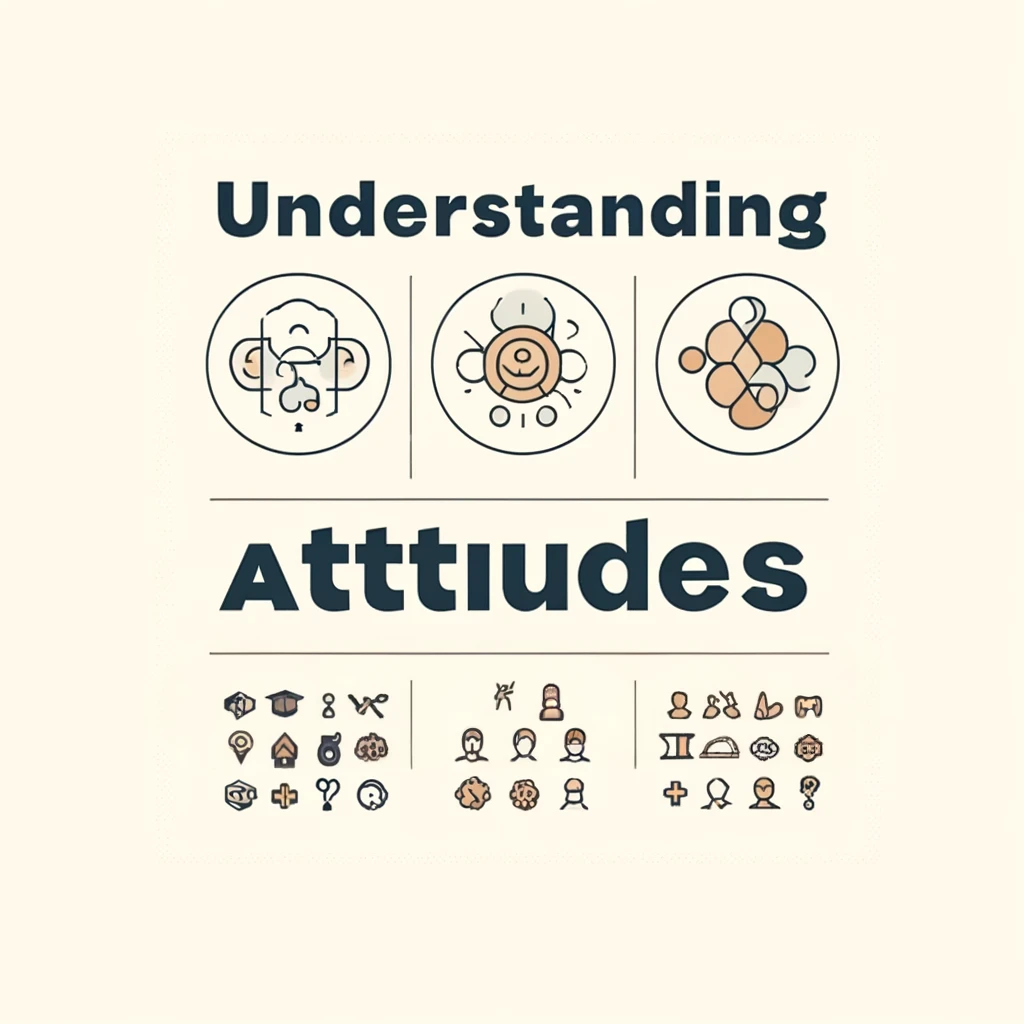Attitudes play a crucial role in shaping human behavior and decision-making processes. In psychology, attitudes are defined as enduring evaluations—favorable or unfavorable—of people, objects, or ideas. These evaluations influence how individuals perceive and interact with the world around them. Understanding attitudes is essential, especially in fields like public administration, where the behavior of civil servants significantly impacts service delivery and public trust.

Understanding Attitudes
Attitudes are learned predispositions to respond in a consistently favorable or unfavorable manner concerning a given object. They are formed through experiences, social influences, and education. Attitudes consist of three primary components:
- Cognitive Component: This involves beliefs, thoughts, and attributes that we associate with an object. For example, a civil servant might believe that transparency is crucial for effective governance.
- Affective Component: This encompasses the emotional response or feelings towards an object. For instance, a positive attitude towards public service might evoke feelings of pride and satisfaction.
- Behavioral Component: This refers to the way attitudes influence behavior. An individual who values efficiency may adopt practices that streamline processes in their workplace.
Example from Public Administration
Consider a public administrator who values public participation in decision-making (cognitive component), feels positively about engaging with the community (affective component), and actively seeks public input in policy development (behavioral component).
Attitudes vs. Behavior
Relationships and Differences
While attitudes can significantly influence behavior, the relationship is not always straightforward. Several factors contribute to discrepancies between attitudes and actual behavior:
- Social Influence: Peer pressure and social norms can lead individuals to act contrary to their attitudes.
- Situational Constraints: Practical limitations, such as lack of resources or time, can prevent individuals from acting on their attitudes.
- Attitude Strength: Stronger attitudes are more likely to predict behavior than weaker ones.
Example
A bureaucrat might hold a positive attitude towards environmental sustainability but may not implement green policies due to budget constraints or lack of political support.

Changing Attitudes
Strategies for Attitude Change
- Persuasive Communication: Effective communication can alter attitudes by presenting compelling arguments and evidence. For instance, training programs that highlight the benefits of e-governance can shift attitudes toward digital transformation.
- Cognitive Dissonance Theory: This theory posits that individuals experience discomfort when their attitudes and behaviors are inconsistent. To alleviate this discomfort, they may change their attitudes or behaviors. For example, a civil servant who values efficiency but works in a bureaucratic system might advocate for reforms to align their work environment with their values.
Challenges in Bureaucratic Context
Changing attitudes in a bureaucratic context can be challenging due to entrenched norms, resistance to change, and hierarchical structures. Effective strategies include continuous training, leadership support, and creating a culture of openness and innovation.
Attitudes in the Civil Services
Importance of Positive Attitudes
Positive attitudes among civil servants are crucial for effective service delivery. Attitudes such as commitment, integrity, and empathy can enhance public trust and improve the quality of services.
Impact on Service Delivery
Civil servants with a positive attitude towards transparency and accountability are more likely to engage in ethical practices, that reduce corruption and improve governance. For example, an officer committed to public welfare will go the extra mile to ensure that government schemes reach their intended beneficiaries.

Measurement of Attitudes
Methods Used
- Surveys and Questionnaires: These are commonly used to measure attitudes by asking respondents to rate their agreement with various statements. For instance, a survey might assess civil servants’ attitudes towards new policy initiatives.
- Observational Techniques: These involve observing behavior in specific situations to infer attitudes. For example, observing how a bureaucrat interacts with the public can provide insights into their attitudes towards citizen engagement.
Challenges
Measuring attitudes can be challenging due to social desirability bias, where respondents may provide socially acceptable answers rather than truthful ones. Additionally, attitudes are complex and multi-dimensional, making them difficult to quantify accurately.

Conclusion
Understanding and influencing attitudes is vital for enhancing the effectiveness of civil services. Positive attitudes can drive ethical behavior, improve service delivery, and foster public trust. Strategies for changing attitudes, such as persuasive communication and addressing cognitive dissonance, are essential in promoting desirable behaviors. Accurate measurement of attitudes is crucial for assessing the impact of interventions and ensuring continuous improvement in public administration. By focusing on the psychology of attitudes, policymakers, and administrators can better understand and influence the factors that drive behavior in the public sector.

